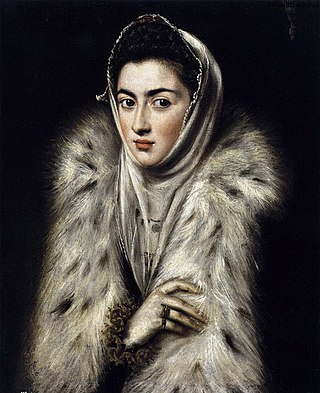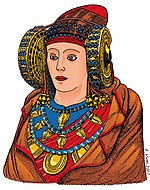
Tourism in Spain is a major contributor to national economic life, contributing to about 11.8% of Spain's GDP. Ever since the 1960s and 1970s, the country has been a popular destination for summer holidays, especially with large numbers of tourists from the United Kingdom, Ireland, Turkey, France, Germany, Italy, the Benelux, and the United States, among others. Accordingly, Spain's foreign tourist industry has grown into the second-biggest in the world.

Elche is a city and municipality of Spain, belonging to the province of Alicante, in the Valencian Community. According to 2014 data, Elche has a population of 228,647 inhabitants, making it the third most populated municipality in the region and the 20th largest Spanish municipality. It is part of the comarca of Baix Vinalopó.

The Prado Museum, officially known as Museo Nacional del Prado, is the main Spanish national art museum, located in central Madrid. It houses collections of European art, dating from the 12th century to the early 20th century, based on the former Spanish royal collection, and the single best collection of Spanish art. Founded as a museum of paintings and sculpture in 1819, it also contains important collections of other types of works. The numerous works by Francisco Goya, the single most extensively represented artist, as well as by Hieronymus Bosch, El Greco, Peter Paul Rubens, Titian, and Diego Velázquez, are some of the highlights of the collection. Velázquez and his keen eye and sensibility were also responsible for bringing much of the museum's fine collection of Italian masters to Spain, now one of the largest outside of Italy.

The Lady of Baza is a famous example of Iberian sculpture by the Bastetani. It is a limestone female figure with traces of painted detail in a stuccoed surface. It is held in Spain's National Archaeological Museum.

A bust is a sculpted or cast representation of the upper part of the human body, depicting a person's head and neck, and a variable portion of the chest and shoulders. The piece is normally supported by a plinth. The bust is generally a portrait intended to record the appearance of an individual, but may sometimes represent a type. They may be of any medium used for sculpture, such as marble, bronze, terracotta, plaster, wax or wood.

The Costa Blanca is over 200 kilometres (120 mi) of Mediterranean coastline in the Alicante province, on the southeastern coast of Spain. It extends from the town of Dénia in the north, beyond which lies the Costa del Azahar, to Pilar de la Horadada in the south, beyond which lies the Costa Cálida.

The Contestani were an ancient Iberian (Pre-Roman) people of the Iberian peninsula. They are believed to have spoken the Iberian language.

Hellín is a city and municipality of Spain located in the province of Albacete, Castilla–La Mancha. The municipality spans across a total area of 781.66 km2. As of 1 January 2020, it has a population of 30,200, which makes it the second largest municipality in the province. It belongs to the comarca of Campos de Hellín.

The National Archaeological Museum is a museum in Madrid, Spain. It is located on Calle de Serrano beside the Plaza de Colón, sharing its building with the National Library of Spain.

Mateo Cerezo, sometimes referred to as The Younger was a Spanish Baroque painter; known primarily for religious works and still-lifes.

Lady of Cerro de los Santos, also known as Gran Dama Oferente, is an Iberian sculpture from the 2nd century BCE, that is now in National Archaeological Museum in Madrid.

Lady of Guardamar, is a limestone female bust, 50 centimetres (20 in) high, dated c. 400-370 BC, that was discovered in fragments in the Phoenician archaeological site of Cabezo Lucero in Guardamar del Segura in Alicante province, Spain, on September 22, 1987.

Iberian sculpture, a subset of Iberian art, describes the various sculptural styles developed by the Iberians from the Bronze Age up to the Roman conquest. For this reason it is sometimes described as Pre-Roman Iberian sculpture.

Galera is a municipality in the comarca of Huéscar, province of Granada, autonomous community of Andalusia, Spain. It is situated in a sparsely populated area roughly 150 kilometres (93 mi) from the provincial capital, Granada.

Cerro de los Santos is an Iberian religious sanctuary built in the 4th century BCE, during the Iberian period, with evidence of continued use into the Roman period. The site lies in southeastern Spain near an ancient road. Little remains of the original structures at the site. Nineteenth century excavations documented some features of a temple but only an outline now remains. The site is known for its many votive sculptures, numbering about 300. Most of the sculptures depict women including the most notable find, the Dama del Cerro de los Santos. In addition to the women, statues of men, possibly dating from a later period, and a few statues of animals have also been found.

Lady in a Fur Wrap is an oil painting now generally attributed to Alonso Sánchez Coello, dated to 1577-1579 and now held at the Pollok House in Glasgow.
Andres Rossi was a Spanish artist. He worked as a painter, draughtsman, print maker, sculptor and writer in Madrid and Seville.

The Immaculate Conception of Los Venerables or The Immaculate Conception of Soult is an oil painting by the Spanish artist Bartolomé Esteban Murillo. It was painted c. 1678 and measures 274 cm × 190 cm. Looted by Marshal Jean-de-Dieu Soult in 1813 and taken to France, it was bought by the Louvre in 1852. It has been held by the Museo del Prado, Madrid, since 1941.

The Pontevedra Museum is a museum in the Galician city of Pontevedra in Spain. It was founded by the Provincial Deputation of Pontevedra on 30 December 1927 and has six buildings for its exhibitions. It has permanent and temporary exhibition rooms. The museum's collections are multidisciplinary, classified into rooms for painting, sculpture, archaeology, decorative arts, engraving and ethnography.

The Tolmo de Minateda is an archaeological site located in Hellín excavated since 1988 by a joint team from the University of Alicante and the Albacete Provincial Museum, directed by Lorenzo Abad Casal, Sonia Gutiérrez, Blanca Gamo and Pablo Cánovas, with funding and authorization from the Junta of Communities of Castilla–La Mancha.




























